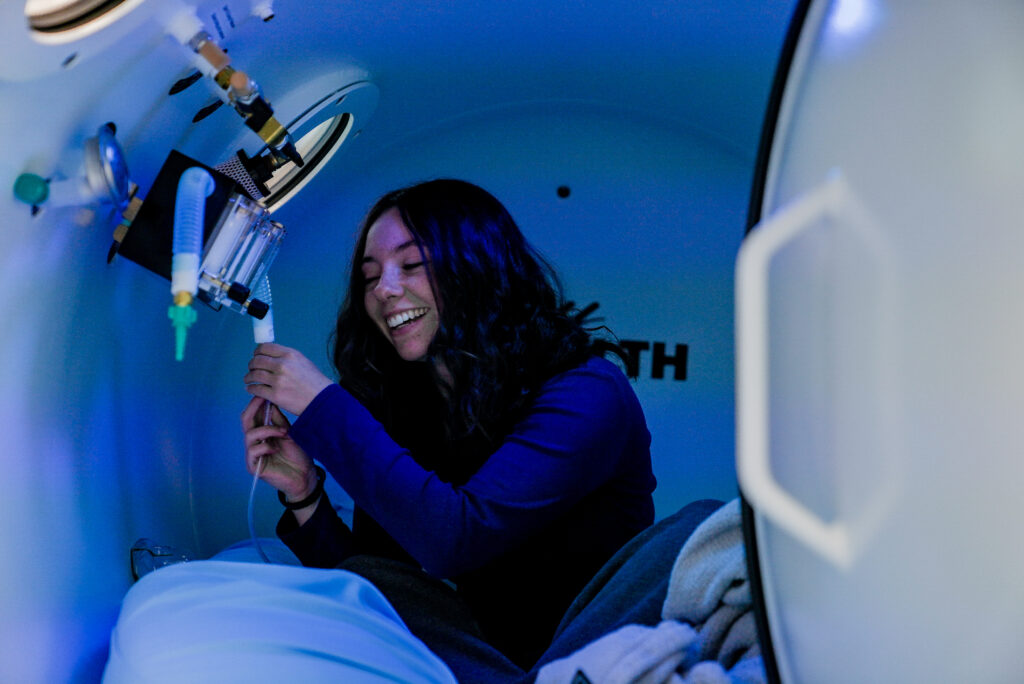Guide to Hyperbaric Oxygen Therapy

Introduction
Hyperbaric Oxygen Therapy, often abbreviated as HBOT, began as a treatment primarily used for deep-sea divers suffering from decompression sickness. Today, it has expanded beyond its initial application, serving as a holistic therapeutic option for various medical conditions. By immersing patients in pure oxygen at increased atmospheric pressures, HBOT supports cellular repair, boosts immune responses, and enhances overall health.
What is Hyperbaric Oxygen Therapy?
HBOT is a non-invasive treatment where patients breathe 100% pure oxygen inside a specially designed chamber pressurized to greater than atmospheric pressure. This heightened pressure allows the lungs to gather more oxygen, increasing the oxygen levels in the blood which then circulates throughout the body. This enriched blood environment stimulates and supports healing and repair processes, especially in damaged or oxygen-deprived tissues.
Benefits
Hyperbaric Oxygen Therapy plays a pivotal role in promoting enhanced healing. By saturating the body with oxygen-rich blood, it fosters cell regeneration, which is especially beneficial in aiding the repair of tissues and bones. Furthermore, the therapy exhibits notable anti-inflammatory effects, offering relief for conditions such as arthritis or assisting in post-surgical recoveries. Beyond these physical advantages, HBOT also provides crucial neurological support. The influx of oxygen can significantly aid brain functions, making it a sought-after treatment for conditions like traumatic brain injuries and strokes. Coupled with these healing properties, HBOT bolsters the body’s immune system. It achieves this by promoting the formation of new blood vessels and activating white blood cells, fortifying the body’s natural defense mechanisms. Lastly, patients often highlight a personal benefit: a sense of rejuvenation. The enhanced circulation of oxygen leaves many feeling revitalized and energized after their therapy sessions.

Why Choose Hyperbaric Oxygen Therapy?
Safety and Non-Invasiveness: Unlike some treatments, HBOT doesn’t involve surgeries or injections, making it a comfortable option for many.
Broad Applications: Beyond decompression sickness, HBOT supports wound healing, brain injuries, burns, and more.
Improved Quality of Life: Many patients experience increased energy, better cognitive functions, and overall improved well-being.
Supports Conventional Treatments: HBOT can be combined with other treatments to enhance recovery and therapeutic results.
Who Can Benefit From Hyperbaric Oxygen Therapy?
Divers: Traditionally used for decompression sickness.
Patients with Chronic Wounds: Such as diabetic foot ulcers.
Burn Victims: Enhancing the healing process of skin grafts and damaged tissues.
Post-Surgical Patients: To expedite recovery.
Neurological Patients: Including those with traumatic brain injuries or post-stroke symptoms.
FAQs:
Is HBOT claustrophobic? Some people might feel uneasy initially, but the chambers are spacious, and clinicians ensure comfort throughout.
How long is a typical session? Sessions vary but often last between 60 to 120 minutes.
Are there any risks? While generally safe, potential side effects include ear discomfort, fatigue, or temporary vision changes. It’s crucial to discuss these with a healthcare professional.
Conclusion:
Hyperbaric Oxygen Therapy, with its therapeutic benefits and non-invasive nature, offers a promising avenue for those seeking enhanced healing, recovery, and overall health improvements. As with any medical treatment, it’s vital to consult with healthcare professionals to determine its appropriateness for individual health needs.

